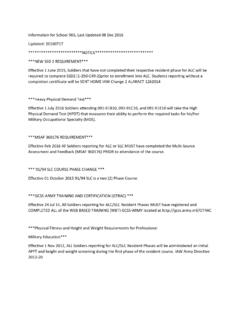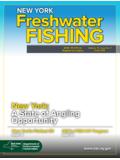Transcription of THE MOST CHALLENGING PLACES TO LIVE WITH …
1 THE MOST CHALLENGING PLACES TO LIVE WITH FALL ALLERGIES8201 Corporate Drive, Suite 1000, Landover, MD 20785 | 1-800-7-ASTHMA | from AAFA The Asthma and Allergy Foundation of America (AAFA) is pleased to share this year s Fall Allergy CapitalsTM Report which ranks the 100 largest cities in the continental United States. AAFA has published this annual report since 2003 to help patients recognize, prevent, and manage allergy symptoms, and to help communities recognize where the needs of their residents with allergic diseases can be better met. Through the ranking, we seek to raise awareness about the impact of fall seasonal allergies and provide helpful information to improve the quality of life for the people who experience them. In the absence of a cure, successful management of chronic and life threatening diseases such as allergies requires recognizing signs and symptoms; provider diagnosis and treatment; reducing or controlling exposure to environmental triggers and ongoing patient (and family/caregiver) involvement, monitoring and self-management.
2 AAFA is committed to working on behalf of individuals with allergies and asthma and their families and caregivers. We are dedicated to improving the quality of life for people with asthma and allergic diseases, wherever they live, learn, work, or play, through education, advocacy and research. We look forward to ongoing collaborations with stakeholders such as researchers, payers, scientists, clinicians, industry, and policymakers to improve the quality of life for people with allergies and asthma. And we will continue to promote public policy initiatives that improve and protect quality of life and treatment options for those affected by asthma and would like to acknowledge staff members Deidre Washington, PhD and Stacy Cooks for their contributions to data collection, analysis and writing. AAFA would also like to thank Mike Tringale for his input and willingness to review preliminary versions of this year s report. AAFA also wishes to thank the broad and diverse range of subject matter experts and stakeholders who helped develop the approach and methodology used to produce this report.
3 Sincerely, Cary Sennett, MD, PhD President and CEO Meryl Bloomrosen, MBI, MBAS enior Vice President, Policy, Advocacy and ResearchAAFA s 2016 Fall Allergy Capitals Report was supported in part by (Quintiles IMS). and Introduction For millions of Americans, allergy is life-limiting. It is critical for people to recognize elements that may trigger their allergies and to determine ways to reduce exposure as well as to consider appropriate 2 3 Allergic conditions are of special concern among the , the sixth leading cause of chronic illness in the , are a major public health Although there are approaches that can reduce allergic sensitivity, there is no cure for allergies. Allergies can be managed with prevention and treatment. More Americans than ever say they suffer from allergies. They are among the country s most common, but overlooked, diseases.
4 In the , more than $18 billion is spent on allergy treatment, Allergic rhinitis, often called hay fever, is a common condition that causes symptoms such as sneezing, stuffy nose, runny nose, watery eyes and itching of the nose, eyes or the roof of the mouth. Pollen from trees, grasses and weeds are the main causes of allergies; allergy symptoms can occur Allergic conditions are among the most common health issues affecting children in the In data published from the 2015 National Health Interview Survey (NHIS), of children under age 18 suffered from hay fever, and 10% suffered from respiratory About the Asthma and Allergy Foundation of AmericaFounded in 1953 and celebrating over 60 years of service, the Asthma and Allergy Foundation of America (AAFA) is the oldest and largest nonprofit patient organization dedicated to improving the quality of life for people with asthma, allergies and related conditions through education, advocacy and research.
5 AAFA provides practical information, community-based services, support and referrals through a national network of chapters and educational support groups. Through its Kids With Food Allergies division, AAFA offers the oldest, most extensive online support community for families raising children with food allergies. In addition, AAFA sponsors and advocates for research to advance the basic science relevant to treatment and cure. It also champions translational research so that the science that we have is applied more consistently and reliably. For more information, visit , and :RUVH WKDQ $YHUDJHz$YHUDJH %HWWHU WKDQ $YHUDJH{ 1 DWLRQDO )DOO 5 DQNLQJV 7LH 2 YHUDOO5 DQN /DVW <HDU0 HWURSROLWDQ $UHD7 RWDO 6 FRUH $YJ 6 XEWRWDO 3 ROOHQ 6 FRUH 6 XEWRWDO 0 HGLFLQH 8 WLOL]DWLRQ SHU 3 DWLHQW 6 XEWRWDO %RDUG &HUWLILHG $OOHUJLVWV SHU 3 DWLHQW z -DFNVRQ 06 zz{ z 0 HPSKLV 71 zz z 0F$OOHQ 7; zzz z /RXLVYLOOH .< zz z 6\UDFXVH 1< zz z 2 NODKRPD &LW\ 2. zz z %XIIDOR 1< zz z 'D\WRQ 2+ zz z 7 ROHGR 2+ z z.}}
6 QR[YLOOH 71 z z 1HZ 2 UOHDQV /$ zz z 3 URYLGHQFH 5, zz z 7 XOVD 2. zz z %DWRQ 5 RXJH /$ zz z /LWWOH 5 RFN $5 z{ z 6DQ $QWRQLR 7; z z $NURQ 2+ z z <RXQJVWRZQ 2+ z z 6 SULQJILHOG 0$ z z 5 LFKPRQG 9$ z z &OHYHODQG 2+ z z &KDWWDQRRJD 71 z z 'DOODV 7; z z &ROXPELD 6& z z 0 DGLVRQ :, z{ z 2 PDKD 1( z 1 DVKYLOOH 71 z 'HWURLW 0, z %LUPLQJKDP $/ z 3 LWWVEXUJK 3$ z $OEDQ\ 1< 3 KLODGHOSKLD 3$ z 1$7,21$/ 5$1.,1*6 ZZZ $OOHUJ\&DSLWDOV FRP 7KH 0 RVW &KDOOHQJLQJ 3 ODFHV WR /LYH ZLWK )DOO $OOHUJLHV $VWKPD DQG $OOHUJ\ )RXQGDWLRQ RI $PHULFD )DFWRUV DUH QRW ZHLJKWHG HTXDOO\ 1 DWLRQDO )DOO 5 DQNLQJV2 YHUDOO5 DQN /DVW <HDU0 HWURSROLWDQ $UHD7 RWDO 6 FRUH $YJ 6 XEWRWDO 3 ROOHQ 6 FRUH 6 XEWRWDO 0 HGLFLQH 8 WLOL]DWLRQ SHU 3 DWLHQW 6 XEWRWDO %RDUG &HUWLILHG $OOHUJLVWV SHU 3 DWLHQW 'HV 0 RLQHV ,$ z *UDQG 5 DSLGV 0, &KDUOHVWRQ 6& {z $XJXVWD *$ {z{ *UHHQYLOOH 6& {z 6W /RXLV 02 :LQVWRQ 6 DOHP 1& {z ,QGLDQDSROLV ,1 +RXVWRQ 7; *UHHQVERUR 1& { &ROXPEXV 2+ &DSH &RUDO )/ {z 5 RFKHVWHU 1< { $XVWLQ 7; +DUWIRUG &7 z{ 1HZ +DYHQ &7 z { (O 3 DVR 7; )UHVQR &$ {.}}}}}}}}}}}}}
7 DQVDV &LW\ 02 1HZ <RUN 1< { z 6 FUDQWRQ 3$ { 7 XFVRQ $= &KDUORWWH 1& { 0 LQQHDSROLV 01 { Q D'XUKDP 1& {z{ $OOHQWRZQ 3$ :LFKLWD .6 z{ 0 LOZDXNHH :, $OEXTXHUTXH 10 5 LYHUVLGH &$ {z -DFNVRQYLOOH )/ %ULGJHSRUW &7 z{{ 9 LUJLQLD %HDFK 9$ {{z &LQFLQQDWL 2+ { &KLFDJR ,/ { 0 LDPL )/ {z +DUULVEXUJ 3$ { 7 DPSD )/ :RUFHVWHU 0$ { /RV $QJHOHV &$ { $WODQWD *$ { z /DNHODQG )/ 3 KRHQL[ $= { { %DOWLPRUH 0' { { %DNHUVILHOG &$ {{z { /DV 9 HJDV 19 {{z { 6 SRNDQH :$ { 1 DWLRQDO )DOO 5 DQNLQJV2 YHUDOO5 DQN /DVW <HDU0 HWURSROLWDQ $UHD7 RWDO 6 FRUH $YJ 6 XEWRWDO 3 ROOHQ 6 FRUH 6 XEWRWDO 0 HGLFLQH 8 WLOL]DWLRQ SHU 3 DWLHQW 6 XEWRWDO %RDUG &HUWLILHG $OOHUJLVWV SHU 3 DWLHQW { %RVWRQ 0$ { { 2 UODQGR )/ {{z { 2[QDUG &$ { { 6 DOW /DNH &LW\ 87 { { 2 JGHQ 87 {z { 6 DUDVRWD )/ { { 6DQ 'LHJR &$ {{ { :DVKLQJWRQ '& {{z { 5 DOHLJK 1& {{ { 6 HDWWOH :$ {{ { 6 WRFNWRQ &$ {{ { 3 URYR 87 { { 3 DOP %D\ )/ {{ { %RLVH ,' {{ { &RORUDGR 6 SULQJV {{ { 6DQ )UDQFLVFR &$ {{ { 'HQYHU &2 { { 'D\WRQD %HDFK )/ {{ { 3 RUWODQG 25 {{z { 6 DFUDPHQWR &$ {{ { 6DQ -RVH &$ {{{ 5 HJLRQDO )DOO 5 DQNLQJV 0 LGZHVW2 YHUDOO1 DWLRQDO 5 DQN0 HWURSROLWDQ $UHD7 RWDO 6 FRUH $YJ 6 XEWRWDO 3 ROOHQ 6 FRUH 6 XEWRWDO 0 HGLFLQH 8 WLOL]DWLRQ SHU 3 DWLHQW6 XEWRWDO %RDUG &HUWLILHG $OOHUJLVWV SHU 3 DWLHQW z 'D\WRQ 2+ zz z 7 ROHGR 2+ z z $NURQ 2+ z z <RXQJVWRZQ 2+ z z &OHYHODQG 2+ z 5 HJLRQDO )DOO 5 DQNLQJV 1 RUWKHDVW2 YHUDOO1 DWLRQDO 5 DQN0 HWURSROLWDQ $UHD7 RWDO 6 FRUH $YJ 6 XEWRWDO 3 ROOHQ 6 FRUH 6 XEWRWDO 0 HGLFLQH 8 WLOL]DWLRQ SHU 3 DWLHQW6 XEWRWDO %RDUG &HUWLILHG $OOHUJLVWV SHU 3 DWLHQW z 6\UDFXVH 1< zz z %XIIDOR 1< zz z 3 URYLGHQFH 5, zz z 6 SULQJILHOG 0$ z 3 LWWVEXUJK 3$ z 5(*,21$/ 5$1.}}}}}}}}}}}}}}}}}}}}}}}}}}}}}}}}}}}} }}}}}}}}}}}}}}}}}}}}}}}}}}}}}}}}}}}}}}}} }}}}}}}}}}}
8 ,1*6 7RS 5 HJLRQDO )DOO 5 DQNLQJV 6 RXWK2 YHUDOO1 DWLRQDO 5 DQN0 HWURSROLWDQ $UHD7 RWDO 6 FRUH $YJ 6 XEWRWDO 3 ROOHQ 6 FRUH 6 XEWRWDO 0 HGLFLQH 8 WLOL]DWLRQ SHU 3 DWLHQW6 XEWRWDO %RDUG &HUWLILHG $OOHUJLVWV SHU 3 DWLHQW z -DFNVRQ 06 zz{ z 0 HPSKLV 71 zz z 0F$OOHQ 7; zzz z /RXLVYLOOH .< zz z 2 NODKRPD &LW\ 2. zz 5 HJLRQDO )DOO 5 DQNLQJV West2 YHUDOO1 DWLRQDO 5 DQN0 HWURSROLWDQ $UHD7 RWDO 6 FRUH $YJ 6 XEWRWDO 3 ROOHQ 6 FRUH 6 XEWRWDO 0 HGLFLQH 8 WLOL]DWLRQ SHU 3 DWLHQW6 XEWRWDO %RDUG &HUWLILHG $OOHUJLVWV SHU 3 DWLHQW )UHVQR &$ { 7 XFVRQ $= $OEXTXHUTXH 10 5 LYHUVLGH &$ {z /RV $QJHOHV &$ { 5 DQN 5 DQNLQJV IRU WKH $OOHUJ\ &DSLWDOV DUH EDVHG RQ DQDO\VLV RI GDWD IURP IDFWRUV LQFOXGLQJ 3 UHYDOHQFH 'DWD 6 HDVRQDO 3 ROOHQ $OOHUJ\ 0 HGLFLQH 8 WLOL]DWLRQ SHU 3 DWLHQW DQG WKH QXPEHU RI %RDUG &HUWLILHG $OOHUJLVWV SHU SDWLHQW :HLJKWV ZHUH DSSOLHG WR HDFK IDFWRU DQG D FRPSRVLWH ILQDO VFRUH ZDV FDOFXODWHG IRU HDFK 0 HWURSROLWDQ 6 WDWLVWLFDO $UHD 06$ 7 RWDO 6 FRUH )LQDO WRWDO VFRUHV DQG VXEWRWDOV ZHUH UHVFDOHG DVVLJQLQJ SRLQWV WR WKH ODUJHVW VFRUH DQG SUHVHQWLQJ DOO RWKHU VFRUHV DV D SHUFHQWDJH RI WKH ODUJHVW 7KH PHWUR DUHD ZLWK D WRWDO VFRUH RI SRLQWV GLG QRW QHFHVVDULO\ KDYH WKH PRVW VHYHUH VFRUH IRU DOO IDFWRUV EXW UDWKHU WKH KLJKHVW WRWDO ZHLJKWHG ILQDO VFRUH RYHUDOO 3 ROOHQ 6 FRUH 4 XDQWLWDWLYH GDWD DQDO\VLV RI DYHUDJH UHFRUGHG SROOHQ PROG VSRUH OHYHOV DQG SUHGLFWHG SUHYDOHQFH IRU FHUWDLQ W\SHV RI SROOHQV PROGV RYHU WKH PRVW UHFHQW IDOO VHDVRQ DQG WKH GXUDWLRQ RI WKH SHDN VHDVRQ IRU WKH PRVW DOOHUJHQLF SROOHQ W\SHV WKLV VFRUH DOVR WDNHV LQWR FRQVLGHUDWLRQ ORFDO SUHYDOHQFH VWDWLVWLFV IRU SHRSOH DIIHFWHG E\ DOOHUJLHV WR SROOHQ 5 HJDUGLQJ GDLO\ SROOHQ FRXQWV SUHYLRXV VWX GLHV KDYH VKRZQ WKDW GDLO\ SROOHQ FRQFHQWUDWLRQV RI JUDLQV SHU FXELF PHWHU RI DLUERUQH DOOHUJHQLF SROOHQ LV D VXIILFLHQWO\ KLJK FRQFHQWUDWLRQ ZKLFK FDQ WULJJHU DOOHUJ\ V\PSWRPV LQ D ODUJH SHUFHQWDJH RI WKH DOOHUJLF SRSXODWLRQ 0 HGLFLQH 8 WLOL]}}}}
9 DWLRQ SHU 3 DWLHQW 6 FRUH 4 XDQWLWDWLYH GDWD DQDO\VLV RI UHFRUGHG SHU FDSLWD XWLOL]DWLRQ RI UHFRUGHG SKDUPDF\ GDWD IRU SUHVFULSWLRQ 5; DOOHUJ\ PHGLFLQHV LQ HDFK PHWUR DUHD GXULQJ WKH PRVW UHFHQW IDOO VHDVRQ $OVR LQFOXGHV RYHU WKH FRXQWHU 27& DQG EHKLQG WKH FRXQWHU %7& DOOHUJ\ PHGLFDWLRQ VDOHV DW WKH SKDUPDF\ FRXQWHU %RDUG &HUWLILHG $OOHUJLVWV SHU 3 DWLHQW 6 FRUH 4 XDQWLWDWLYH GDWD DQDO\VLV IRU WKH PRVW UHFHQW IDOO VHDVRQ RI WKH QXPEHU RI %RDUG &HUWLILHG DOOHUJ\ DQG LPPXQRORJ\ VSHFLDOLVWV SHU HVWLPDWHG SDWLHQWV $$)$ $$)$ LV VROHO\ UHVSRQVLEOH IRU WKH FRQWHQWV RI WKLV UHSRUW $$)$ IRXQGHG LQ LV WKH OHDGLQJ QDWLRQDO DGYRFDF \ RUJDQL]DWLRQ IRU WKH DOOHUJ\ FRPPXQLW\ LQ WKH 8 6 $$)$ SURYLGHV HGXFDWLRQ SURPRWHV DGYRFDF\ DQG IXQGV UHVHDUFK *29(510(17$/ 6285&(6 1 DWLRQDO ,QVWLWXWH RI $OOHUJ\ DQG ,QIHFWLRXV 'LVHDVHV 1 DWLRQDO ,QVWLWXWHV RI +HDOWK $OOHUJLF 5 KLQLWLV ,QIRUPDWLRQ 8 6 'HSDUWPHQW RI &RPPHUFH %XUHDX RI WKH &HQVXV 8 6 &HQVXV 8 SGDWHV8 6 'HSDUWPHQW RI &RPPHUFH 1 DWLRQDO 2 FHDQLF DQG $WPRVSKHULF $GPLQLVWUDWLRQ $LU 5 HVRXUFHV /DERUDWRU\ $5/ $LU 6 WDJQDWLRQ &OLPDWRORJ\ IRU WKH 8 6 8 6 (QYLURQPHQWDO 3 URWHFWLRQ $JHQF\ 6 WDWXV DQG 7 UHQGV /DWHVW )LQGLQJV RQ 1 DWLRQDO $LU 4 XDOLW\ 121 *29(510(17$/ 6285&(6 $VWKPD DQG $OOHUJ\ )RXQGDWLRQ RI $PHULFD $VWKPD DQG $OOHUJ\ $QVZHUV $PHULFDQ %RDUG RI 0 HGLFDO 6 SHFLDOWLHV 6 SHFLDOLVW 'DWDEDVH ,1'8675< 6285&(6 ,06 6', 3 ROOHQ FRP 'DWDEDVH ,06 0 HGLFDWLRQ 'DWDEDVH Cardona, V.))
10 , Guilarte, M., Luengo, O., Labrador-Horrillo, M., Sala-Cunill, A., & Garriga, T. (2011). Allergic diseases in the elderly. Clinical and Translational Allergy, 1, 11. Stone, (2003) Atopic Diseases of Childhood. Current Opinion in Pediatrics 15, National Center for Health Statistics. National Health Interview Survey, 2015. Table C-2a. Age-adjusted percentages (with standard errors) of hay-fever, respiratory allergies, food allergies and skin allergies in the past 12 months for children under age 18 years, by selected characteristics: United States, 2015.
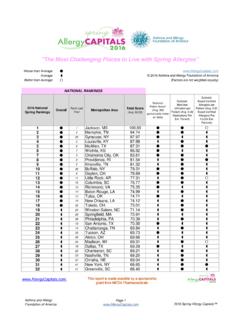

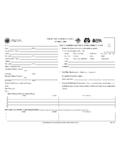



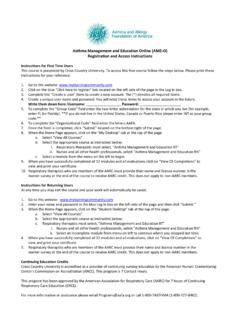




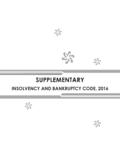
![Untitled-1 [www.ignou.ac.in]](/cache/preview/6/8/7/7/c/a/f/9/thumb-6877caf95d2827f200fdf89f0c68203f.jpg)


